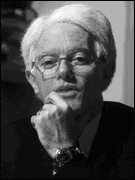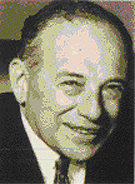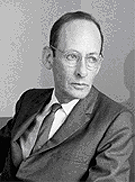 |
| Bill Miller |
| Born: | |
| Affiliations: |
|
| Most Famous For: | Bill Miller is the portfolio manager for the Legg Mason Value Trust (LMVTX) fund, which, under his management, recorded one of the longest "winning streaks" in mutual fund history. Between 1991 and 2005, the fund\'s total return beat the S&P 500 Index for 15 consecutive years. Miller\'s fund grew from $750 million in 1990 to more than $20 billion in 2006. |
Personal Profile
Miller graduated from Washington & Lee University
He also serves as chairman of the board of trustees of the Santa Fe Institute, a leading center for multidisciplinary research in complex systems theory.
Investment Style
In November of 2006, Fortune Magazine's managing editor, Andy Serwer, characterized Bill Miller's investing style as iconoclastic: "You simply can't do what he's done in the supremely competitive, ultra-efficient world of stock picking by following the pack …The fact is that Miller has spent decades studying freethinking overachievers, and along the way he's become one himself."
Bill Miller is a self-described value investor, but his definition of value investing is somewhat disconcerting to some traditional value investors. Miller believes that any stock can be a value stock if it trades at a discount to its intrinsic value.
Individual investors can learn from Miller's application of this investing principle, which, he says, was the basis for the 15-year benchmark-beating record of the Legg Mason Value Trust fund.
He attributes two factors to this success: exhaustive security analysis and portfolio construction. In his 2006, fourth-quarter letter to the shareholders for Value Trust, Bill Miller explains how these two factors work:
Value investing means really asking what are the best values, and not assuming that because something looks expensive that it is, or assuming that because a stock is down in price and trades at low multiples that it is a bargain … Sometimes growth is cheap and value expensive. . . . The question is not growth or value, but where is the best value … We construct portfolios by using ‘factor diversification.' . . . We own a mix of companies whose fundamental valuation factors differ. We have high P/E and low P/E, high price-to-book and low-price-to-book. Most investors tend to be relatively undiversified with respect to these valuation factors, with traditional value investors clustered in low valuations, and growth investors in high valuations … It was in the mid-1990s that we began to create portfolios that had greater factor diversification, which became our strength …We own low PE and we own high PE, but we own them for the same reason: we think they are mispriced. We differ from many value investors in being willing to analyze stocks that look expensive to see if they really are. Most, in fact, are, but some are not. To the extent we get that right, we will benefit shareholders and clients.
Publications
- "The Man Who Beats The S&P: Investing With Bill Miller" by Janet Lowe (2002)
Quotes
"I often remind our analysts that 100% of the information you have about a company represents the past, and 100% of a stock's valuation depends on the future."
"The market does reflect the available information, as the professors tell us. But just as the funhouse mirrors don't always accurately reflect your weight, the markets don't always accurately reflect that information. Usually they are too pessimistic when it's bad, and too optimistic when it's good."
"What we try to do is take advantage of errors others make, usually because they are too short-term oriented, or they react to dramatic events, or they overestimate the impact of events, and so on."


.jpg)


